Saw Palmetto Berries
A Brief Overview (from Biology to Business) of a Little-Known Super Plant
Table of Contents
- Where to Find Saw Palmettos
- What do Saw Palmettos Look Like?
- Saw Palmetto Berry Season
- Harvesting Saw Palmetto Berries
- Selling Saw Palmetto Berries
- Saw Palmetto Berry Market Prices
- Products, Uses, & Benefits
- Industry Players
- Industry Challenges
- Opportunities
1. Where to Find Saw Palmettos
Out of the whole entire globe, Saw Palmettos (serenoa repens) grow almost entirely in the state of Florida.
Saw Palmettos can grow in southern parts of Texas, Louisiana, Mississippi, Georgia, and Alabama, but the vast majority will be found in Florida.
Saw Palmettos are actually one of the most common palm trees in the United States. They are hardy in USDA zones 8–10, which are habitats with diversity ranging from sandy dunes to swampy wetlands.
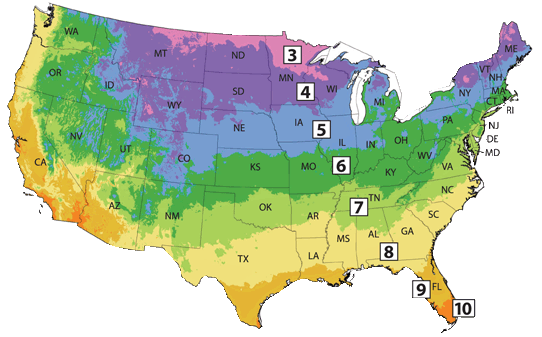
Saw Palmettos grow best in dry, well-draining soil with partial shade to full sun. It is common to find Saw Palmettos in clusters along Florida highways and in areas of seasonal wetland.
2. What do Saw Palmettos Look Like?
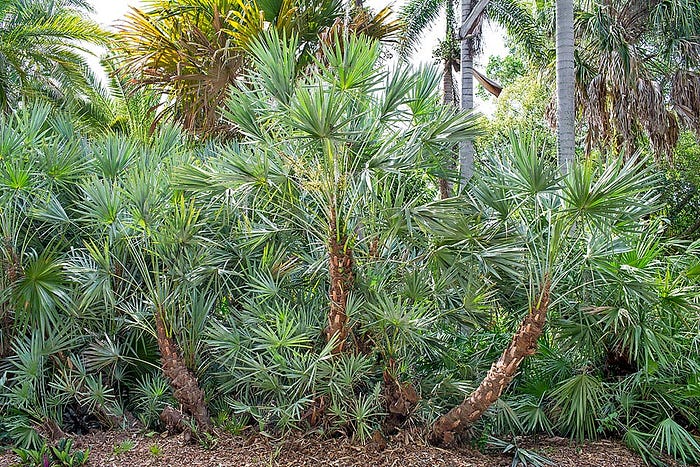
As the name eludes to, Saw Palmettos are uniquely identified by their razor-sharp or saw-like stems (technically called petioles).
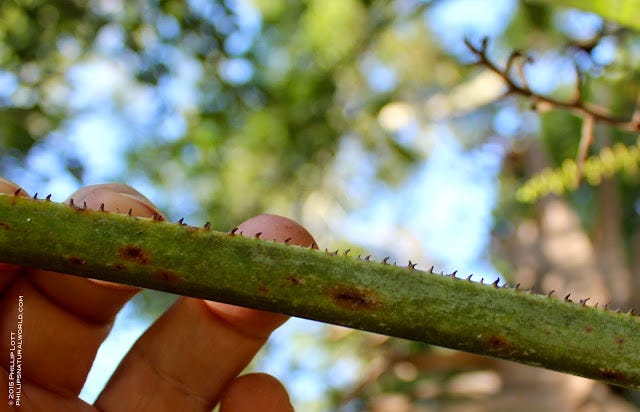
Saw Palmettos are shrub-like palms that often form thick colonies or clusters joined by underground stems or trunks. Their trunks, as shown below, can often be labeled as creeping.
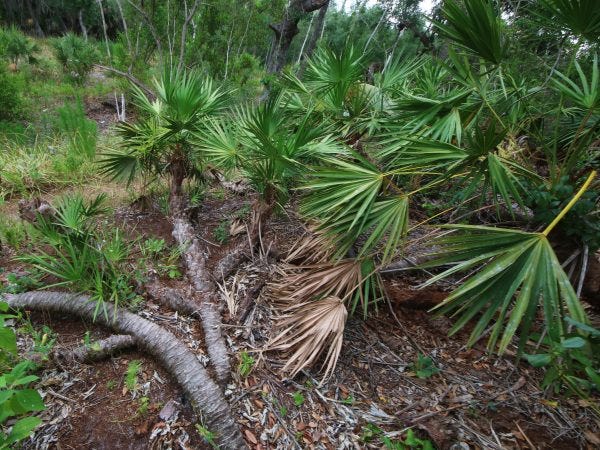
Although their trunks are often underground or creeping along the soil, Saw Palmettos can grow upright over 7 feet tall. The longer the trunk, the older the plant.
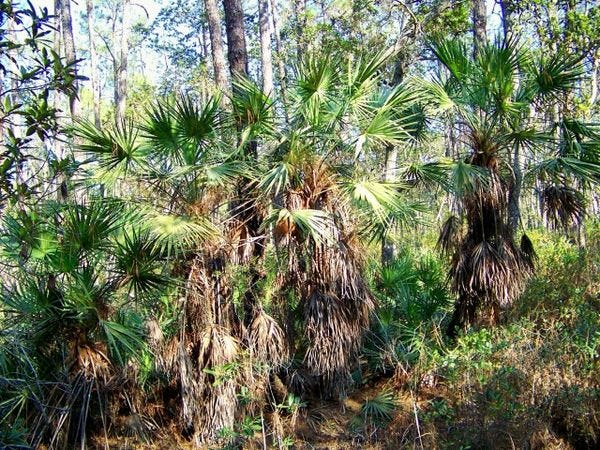
Saw Palmettos are slow growing and can have a lifespan of up to 700 years.
Panicles are the loose branching clusters of flowers that will yield the infamous Saw Palmetto berries.


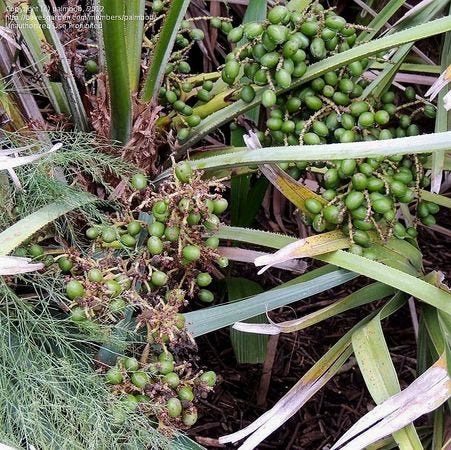
3. Saw Palmetto Berry Season
Typical harvest season for Saw Palmetto berries is in August to September.
You will see small hard green berries start to form before August, but until then the main things to look for are panicles.
Healthy Saw Palmetto panicles look like this…
Not all Saw Palmettos will yield berries even with the proper care. There are teams who provide care-taking services and profit-sharing for landowners in exchange for harvesting their Saw Palmetto berries. With the proper care, it is possible to get Saw Palmettos to yield berries where there were none before. This provides better yields for harvesting and the ecosystem.


4. Harvesting Saw Palmetto Berries
Saw Palmetto berries span millions of acres in Florida. Typical harvesting conditions include temperatures of over 95°F/35°C with high levels of humidity. The saw-like teeth of the Saw Palmettos cut through clothes and gloves and the berries are buried under large stalks in the shrubs. It’s not uncommon to see alligators and/or eastern diamondback rattlers while harvesting Saw Palmetto berries. One may even see black bears, panthers, and/or wild boar.
Ripened Saw Palmetto fruits vary in color from green to orange to black depending on the amount of extract available. The berries are about the size of grapes and can fall off their stalks easily if disturbed.
It’s common for Saw Palmetto berries to be first collected into barrels, sacks, and/or buckets to then be dumped into a larger bin.
5. Selling Saw Palmetto Berries
Saw Palmetto berry sellers come in all shapes and sizes. Sellers vary from an individual picking under 100 lbs into a sack or bucket to score some extra cash to full-fledged, vertically-integrated, corporations fulfilling millions of pounds in a season for various contracts.
Most Palmetto berry broker locations are fairly simple with a truck, forklift, 1,000 lb harvesting bin(s), and a scale on an empty lot off a main road. They are all seasonal operations with a typical opening window of August-September based on berry ripeness and market conditions. Processing operations can go year-round since the berries last longer once dried.
6. Saw Palmetto Berry Market Prices
Market prices for Saw Palmetto berries are in constant flux depending on supply and demand. One can expect harvested berries to sell for anywhere from $0.50/lb to $3.00/lb. This changes based on the broker location, day, and even the hour. Generally, Saw Palmetto berry prices make a bell-curve each season; prices start low, grow higher, then taper off again.
7. Products, Uses, & Benefits
Historical Uses
Serenoa repens (Saw Palmettos) have been utilized by Native Americans, such as the Seminole tribe of Florida, for years as a source of food, medicine, oil, wax, and fibers (for textiles, baskets, roof thatch, ropes, etc).
Saw Palmetto berries were used by tribes for medicinal purposes such as being a diuretic, sedative, and anti-inflammatory. They would be used for various applications such as treating migraines, cough, indigestion, asthma, bronchitis, diarrhea, impotence, and male infertility.
The Serenoa repens was introduced to modern western medicine in the 1870s. American physician H.W. Felter wrote in his 1898 “King’s American Dispensatory” about Saw Palmettos…
…it’s a sedative to the nerves, expectorant, tonic, beneficial for the digestive system…its main action appears to be that on the reproductive organs.
Modern Consumption
In 2016, roughly 8 million pounds or 3.6 million kilograms of Saw Palmetto berries were consumed in the US alone.
Today, Saw Palmetto berries, powders, capsules, and extracts are labeled for use under a variety of medical, health, dietary, & nutraceutical products.
They are widely recognized as a phytomedicinal (herbal-based traditional medicine) product that has little to no side effects relative to other medications.
Natural Prostate Health & Remedy
Saw Palmetto berries are used to treat disturbances with prostate health (specifically those due to BHP — Benign Prostate Hypertrophy/Hyperplasia or an enlarged prostate).
Saw Palmetto berries are used to reduce urinary frequency, increase urinary flow, and decrease nocturia (disruptive nighttime urination).
Saw Palmetto berries are common in supplements to balance hormone levels and boost testosterone.
Natural Hair Loss Health & Remedy
Saw Palmetto berries are used to treat thinning hair, hair loss, and baldness.
Ecological Value
Saw Palmettos provide cover for sand skinks, burrowing owls, and Florida scrub jay. They are even used as a hidden nesting place for turkeys and deer.
Black bears, deer, ants, beetles, and bees all frequent Saw Palmettos.
Saw Palmettos are very resilient and are one of the first plants to resume growth after forest fires. Their fan leaves begin regrowth in as little as a few weeks.
8. Industry Players
Landowners
Saw Palmetto landowners range from residential homeowners with lots under 5 acres to large farm landowners with thousands of acres. It’s common for landowners to work with harvesters & caretakers for a share of profits.
Harvesters & Caretakers
- Palmetto Berry Bros
- The Saw Palmetto Harvesting Company
- Saw Palmetto of South Florida
Brokers — Buyers/Sellers
- WE Brothers
- Palmetto Berry Bros
- Citrus County Saw Palmetto Buyers
- East Coast Palmetto Berries
- Peace River Saw Palmetto Berries
- Saw Palmetto Market LLC
- Saw Palmetto of South Florida
- SawPalmetto.com
- Valensa International
Processors & Value-Add
- WE Brothers
- Palmetto Berry Bros
- Havasu
- Prostate Rx
- StarWest Botanicals
- Valensa Extraction Technologies
9. Industry Challenges
Saw Palmettos can take up to 50 years to grow to their larger sizes. Unfortunately they are victim to burning and bulldozing to clear land for cattle and/or communities. This is especially challenging because Saw Palmettos do not root from cuttings. The only practical way to grow another plant is from seed. Transplanting Saw Palmettos is extremely difficult due to their large trunk and root system.
Saw Palmetto berries are also subject to exploitation since some people illegally trespass to harvest berries on private property and over-pick areas for the surrounding wildlife. As of July 17, 2018, the Florida Department of Agriculture and Consumer Services (FDACS) placed Saw Palmettos on the Commercially Exploited Plant List. Harvesting is still completely legal, but it is required to get the proper permitting to mitigate trespassing and over-picking of land. A permit is required with FDACS to harvest Saw Palmetto berries in Florida with written permission from the landowner(s). This changes the dynamic for immigrant farm workers who would typically harvest the berries but can now face a crime that would get them deported if they’re not careful.
Experts disagree on the benefits of Saw Palmetto berries and they don’t clearly understand how they improve various issues/symptoms. Larger scale research is needed to conclusively show the effectiveness of Saw Palmetto berries and exactly what they do for various health applications.
Saw Palmetto is available in the United States as a dietary supplement. It is used in Europe as a treatment for BPH and is approved by the German Commission E, who evaluates herbal treatments for their safety and efficacy. The FDA does not regulate dietary supplements the same way it regulates medicines. A dietary supplement can be sold with limited or no research on how well it works. Dietary supplements may not be standardized in their manufacturing which leads to differing brand quality and even differing quality between lots under the same brand.
10. Opportunities
Protecting the Ecosystem
Saw Palmettos play a vital role for the environment and wildlife. With land constantly being clear for new housing and developments there becomes an increasing need for the same amount of berries off of less land. Professional and responsible companies looking to grow yields off of the same or less land will be critical not only to satisfy the growing demand of Saw Palmetto berries for human health benefits, but also providing this essential food for displaced wildlife.
Ground-Level Support
Although the majority of Saw Palmetto land is in state parks or owned by large land entities, there still exist countless smaller properties (under 5–100 acres) where landowners have Saw Palmettos onsite but need help/guidance to make something of it legally and viably. There is also the perk of landowner support providing extra eyes to mitigate poachers and trespassers.
Money for Landowners
The opportunity exists for landowners to pull money off of their land year after year just by getting involved with a responsible and reputable harvesting/care-taking business. Ultimately, landowners can get their Saw Palmettos cleaned up and cared for, do no physical work, and get a share of the profits.
Tracking Market Prices
The Saw Palmetto industry is very agile. The window of harvesting and selling is quick. In only 6–12 weeks, Saw Palmetto season can start and finish for most entities. With so many sellers, buyers, locations, and fluctuating market prices, there exists the need to track market prices for buyers and sellers to post and view on one platform. Most sellers won’t easily know if an hour drive will give them $0.30/lb more for the same volume. On the flip side, most buyers won’t easily know if someone down the road is selling for significantly more or less. The current market is a decentralized amalgam driven by supply and demand.
Growing Products
Saw Palmetto berries are already integrated as a powder into several products such as supplement pills, but there are even more final product forms still growing in demand such as Saw Palmetto teas, lotions, extracts, etc.
Growing Awareness of Health Benefits
As people look into more alternatives for medicine and natural solutions to modern ailments, the demand for Saw Palmettos will rise. Most people have never heard about Saw Palmettos. They are definitely a little-known super plant.
For more info about Saw Palmetto Berries or to get involved, visit PalmettoBerryBros.com
Palmetto Berry Bros — professional & responsible HARVESTING, PROCESSING, BROKERING & SELLING of SAW PALMETTO BERRIES in Central Florida.



